
I am a product design major who turned to ergonomics & human factors to study the physiological and psychological characteristics of users to ensure that the system meets their needs, to improve the user experience and system effectiveness.
Major project
A study into the reduction of perceived risk in using digital banking for older people
Background
Increasingly, banks and non-banking organizations are beginning to provide appropriate services for the financially excluded and underserved, and older people are a group in need of care. According to the latest projections from the Office for National Statistics in the UK, the population of people aged 65 and over will increase to 8.6 million by 2026. Looking at these statistics, there is a promising future market for older people, who have more savings than most younger people, so their digital banking experience is significant for banks.

Aim
“The aim of this study is how to reduce the perceived risk of using digital banking among older people to increase their willingness to use the service.”
Objectives
1. to explore perceived risks when older people use digital banking.
2. to explore whether friends and family can effectively reduce the perceived risk of older people.
3. to explore which type of digital banking is more suitable for older people.
Methods
Survey
Using a non-scaled questionnaire with 20 participants ensured that each participant answered the same questions, resulting in greater consistency when analysing the data. Finally to understand which perceived risk mainly affects the participants and also to understand the main reasons why participants use other banking platforms for comparative understanding. This study aims to reduce the perceived risk of using digital banking among older people to increase their willingness to use the service.
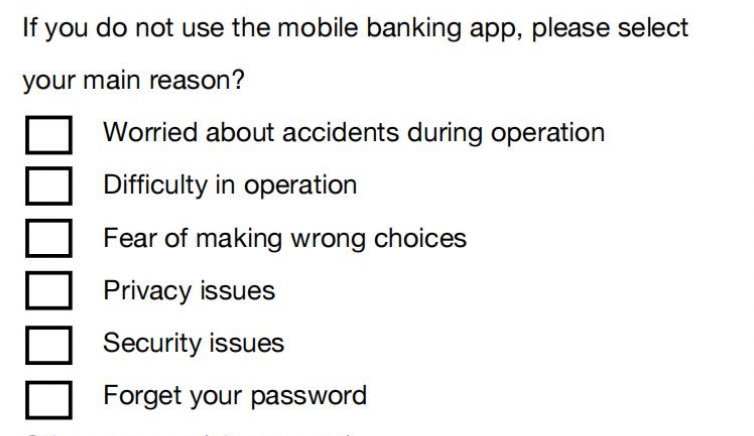
Prototype task
Based on the results of the initial research, I designed a prototype and arranged four different sets of tests, including using mobile banking alone, having family members remotely help to use online banking, using mobile banking alone, and having family members help to use online banking, and all of these four sets of tests need to complete a common task, which is to transfer money to someone.




Questionnaires
Each participant was asked to fill out a Likert scale with 7 questions after doing each group of tasks. To understand the perceived risk of the participants in different situations. And to compare, whether there is a change in perceived risk when helped by family members and when used alone, and to understand the use of different digital banking.

Results
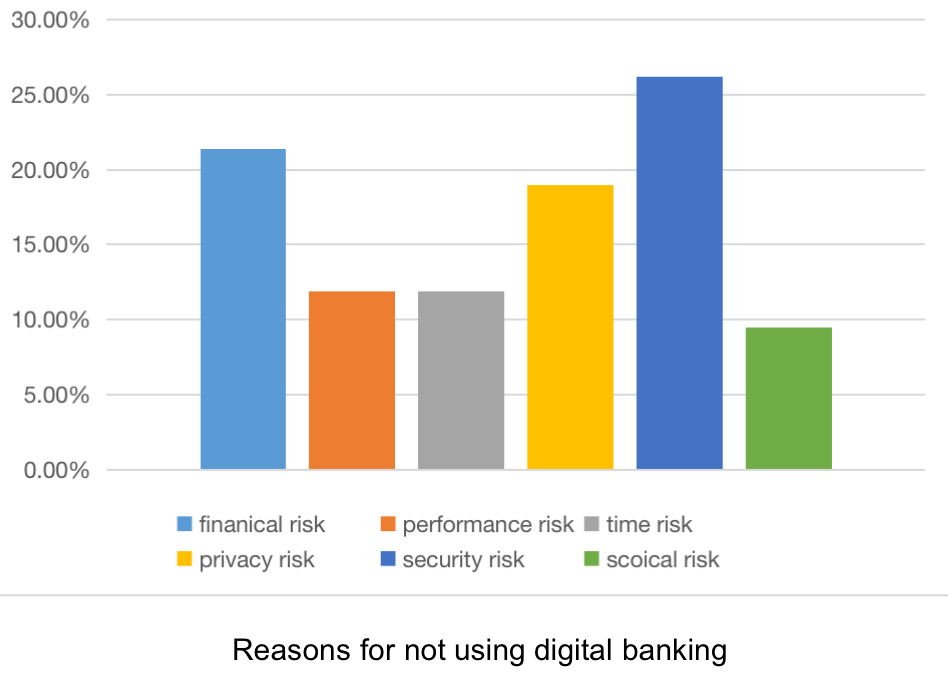
1.Which type of perceived risk primarily affects participants
The study results show that among participants who do not use digital banking, the perceived risk type with the most significant impact is security risk . This was followed by financial risk and closely followed by privacy risk.
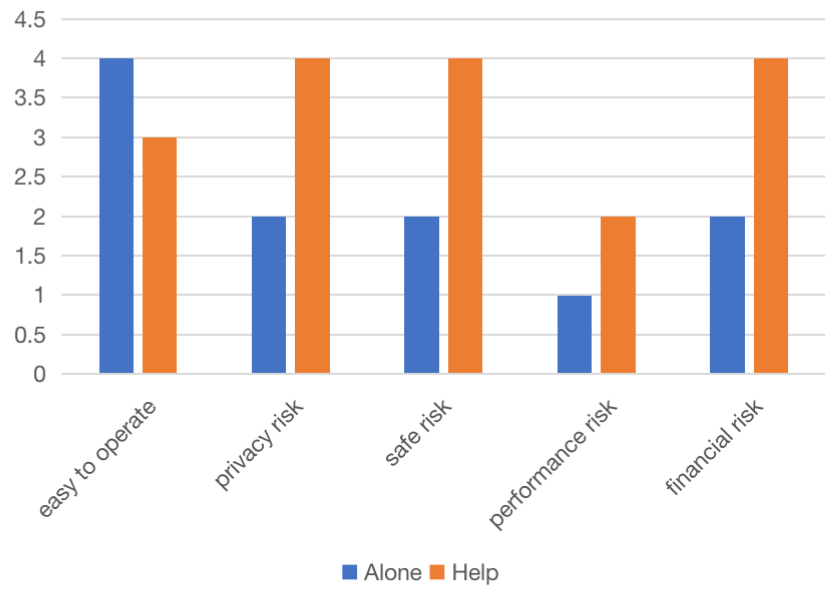

2.Results of family members helping to reduce perceived risk
When using digital banking alone, the highest score for participants’ perceived level of security risk in digital banking was 2. When using digital banking with the assistance of someone close to them, the highest score for respondents’ perceived level of security risk was 4. Similar to security risk, financial risk and privacy risk showed similar trends. Finally using the Wilcoxon signed rank test it was learnt that only privacy risk and security risk were significant.
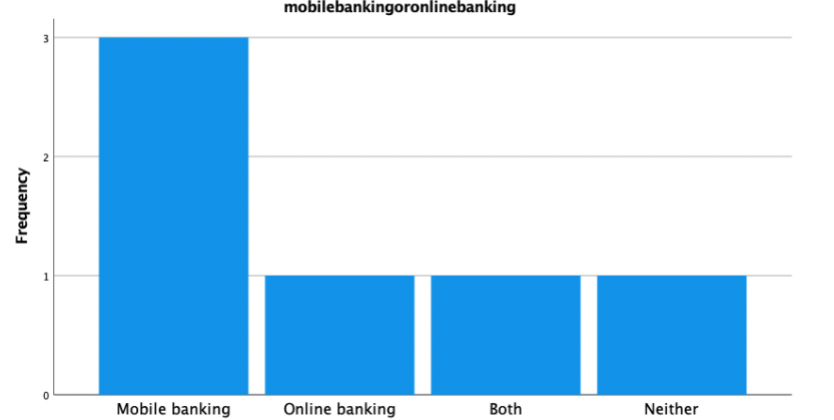
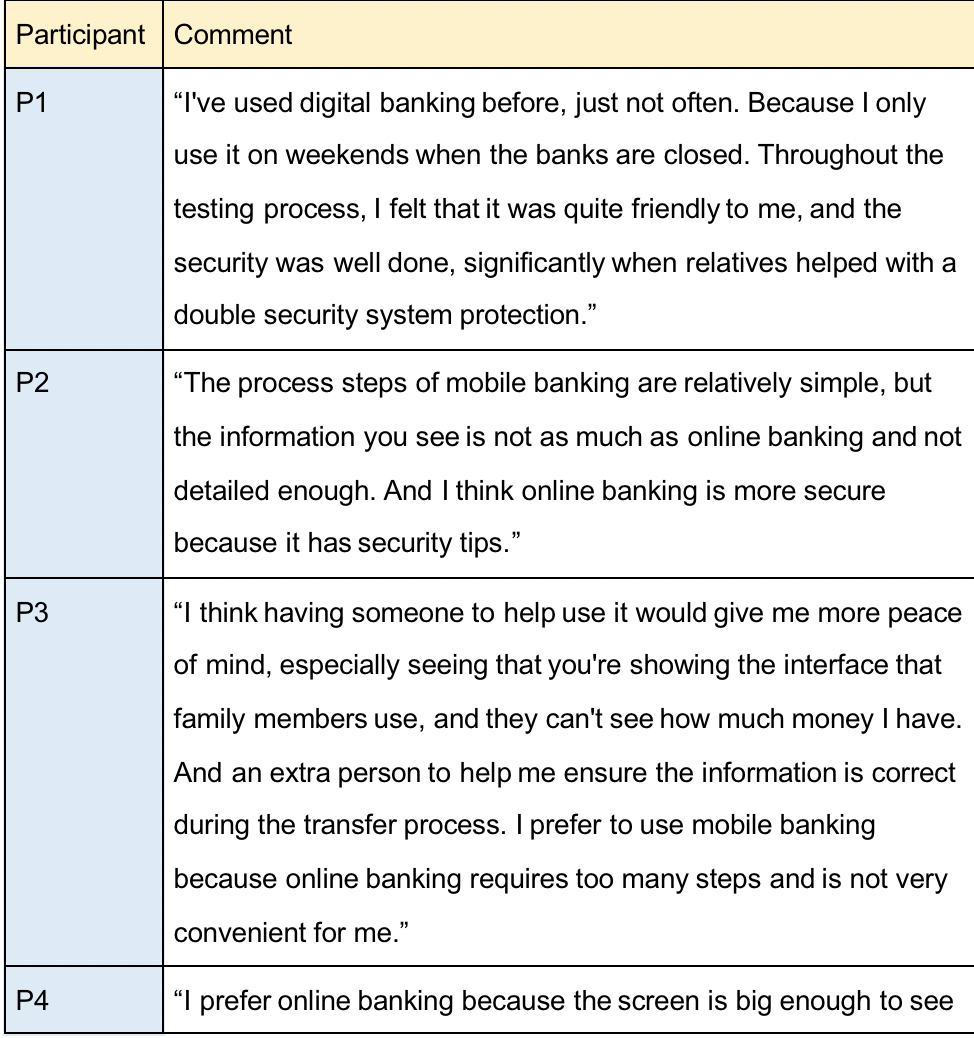
3.Participant preferences for digital banking
From the data, the participants felt more positive towards using mobile banking. However, they also thought that that online banking will be more secure and privacy protected than mobile banking.
Discussion and conclusion
This study focused on the perceived risks of older adults when using digital banking. The study shows that security risk is the top concern for older adults, followed by financial risk and privacy risk. In addition, the study found that older people tend to prefer local banks as they perceive them to be more secure, with security risks being the main reason for not adopting digital banking. To reduce the perceived risk of older people, it was investigated whether their perceived risk could be reduced with the help of family members. Thus it was learnt that family help reduces security and privacy risk to some extent but does not significantly reduce financial risk. The study suggests that the involvement of a close person can provide a sense of security and trust, but may not mitigate the concerns associated with financial loss. The study recommends enhanced security measures, transparent disclosure, and optimisation of digital banking services to meet the specific needs of older users.
Visionary Thinkers
Visionary Creators
Visionary Makers